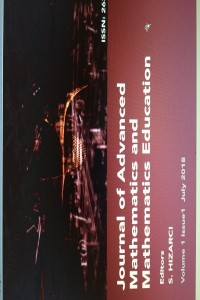A Relation Between Maclaurin Coefficients and Laplace Transform
A Relation Between Maclaurin Coefficients and Laplace Transform
In this paper, we formulate Maclaurin coefficients of a function, not necessarily analytic at point $0$, by using Laplace transform as follows: $$ f^{\left(n\right)}\left(0\right)=\frac{1}{\left(n+1\right)!}\lim_{r\to+0}\frac{d^{n+1}}{dr^{n+1}}L\left\{f\right\}\left(\frac{1}{r}\right), $$ where $L$ is the Laplace transform, $r=\frac{1}{s}$, $s$ is the variable of the Laplace transform and $n\in\mathbb{N}\cup\left\{0\right\}$. Also, we apply this formula on some functions. Finally, we give new formulas for Bernoulli numbers via Polygamma function and Hurwitz zeta function.
Keywords:
Maclaurin coefficients, Laplace transform, Bernoulli numbers, Polygamma function Hurwitz zeta function,
___
- Abramowitz M., Stegun I.: Handbook of Mathematical Functions. Dover Publications, New York (1965)
- Ahlfors V.L.: Complex Analysis. McGraw-Hill Inc., New York (1979)
- Debnath L., Bhatta D.: Integral Transforms and Their Applications. CRC press, Boca Raton (2014)
- Widder V.D.: The Laplace Transform. Princeton University Press, Princeton (1941)
- ISSN: 2636-8714
- Başlangıç: 2019
- Yayıncı: Seyfullah HIZARCI
